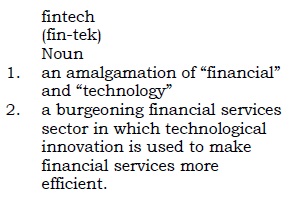-
Fintech Focus: T&H's Top 5 Takeaways From the U.S. Department of the Treasury's White Paper Concerning Online Marketplace Lending
on June 3, 2016 by John J. Tenaglia
on June 3, 2016 by John Tenaglia
 On May 10, 2016, the U.S. Treasury Department issued a white paper on the online marketplace lending industry titled “Opportunities and Challenges in Online Marketplace Lending.” The Treasury’s report offers insight into the emerging landscape of online lending from the perspective of advocates, academics, investors, industry insiders, financial institutions, and others. It provides an overview of the industry and showcases Treasury’s efforts to stimulate dialogue on the potential benefits and risks of online marketplace lending, and to better inform future policy decisions that promote transparency, fairness, and safe lending practices. It is also interesting in its timing, as it was released amid the turmoil wrought from the LendingClub fallout. You can find the Treasury’s report here.
On May 10, 2016, the U.S. Treasury Department issued a white paper on the online marketplace lending industry titled “Opportunities and Challenges in Online Marketplace Lending.” The Treasury’s report offers insight into the emerging landscape of online lending from the perspective of advocates, academics, investors, industry insiders, financial institutions, and others. It provides an overview of the industry and showcases Treasury’s efforts to stimulate dialogue on the potential benefits and risks of online marketplace lending, and to better inform future policy decisions that promote transparency, fairness, and safe lending practices. It is also interesting in its timing, as it was released amid the turmoil wrought from the LendingClub fallout. You can find the Treasury’s report here.
Fintech companies may find the following five takeaways from the Report to be useful as the online lending industry continues to attract scrutiny:
1. New credit scoring models are untested through a complete credit cycle
The growth of online marketplace lending has benefitted from low interest rates, declining unemployment, strong credit conditions and stricter regulations over traditional lending institutions. But many commenters have expressed concern that these new data-driven lending models remain untested through a credit downturn. With the development of new data-driven credit models during favorable credit conditions and low interest rates, it is not yet clear how they will perform in a less favorable credit environment. In fact, despite growth in a favorable credit climate, some online marketplace lenders experienced a steady increase in delinquency and charge off rates in 2015. Commenters also note that the current servicing and collection infrastructure is untested for increased interest rates and high delinquency. Consumer advocates have expressed concern over the heavy reliance by online marketplace lenders on a small number of servicing and collection firms, and it is still unclear how the industry would respond to a rise in loan defaults and delinquencies. While investors often require back-up servicing arrangements as prerequisites to investments in online marketplace lending, Treasury highlights the need for online marketplace lenders to develop back-up arrangements for the continued servicing of loans in the event the platform fails.
2. Concern over the industry’s ability to retain investors
Online marketplace lending models are investor-driven and heavily dependent on the ability to attract funding, but many commenters have expressed concern over the industry’s ability to retain investors. Large investors and financial institutions are increasingly reluctant to invest in whole loans, member payment dependent notes and securitization transactions. Investor reluctance is primarily the result of a lack of predictable cash flow, untested data algorithms and increasing competition with high yield products. The increase in delinquencies and charge-offs has presented additional challenges in the capital markets, and the liquidity of online marketplace lending remains uncertain.
3. Small businesses may need enhanced safeguards
The high underwriting costs associated with small business loans and tightened regulations over traditional financial institutions since the economic recession have resulted in a substantial financing shortfall for small businesses, including micro-businesses and startups in particular. With the emergence of online marketplace lending, however, small businesses have received expanded access to credit for working capital and expansion needs. Small businesses are increasingly able to obtain more affordable financing and smaller loans in a shorter time period. Despite this, small businesses report being dissatisfied with online marketplace lending due to high interest rates, unfavorable repayment terms, and lack of transparency. Many commenters have also suggested that the current safeguards for small businesses are inadequate. Some argue that consumer protection laws should be extended to small business loans, and because the market is increasingly leveraging more data sources to assess credit risk, there is a need for stronger data privacy laws for small businesses.
4. Uncertainty of regulations
Commenters expressed uncertainty on the applicability of existing federal and state regulations to new lending models and practices. As a result of the online lending market’s nascent stage and departure from traditional lending models, many are unclear whether the regulations in place for traditional financial institutions apply to online lenders. This confusion has led to a need for greater regulatory clarity. For example, Treasury noted that the industry’s responses to the RFI highlighted uncertainty as to whether the Dodd-Frank Act’s risk retention provisions applied to online marketplace lenders involved in selling member payment dependent notes. Furthermore, cybersecurity safeguards and small business protections are lacking, and compliance with fraud and anti-money laundering laws is not always uniform due to the complexity of relationships between online marketplace lenders and traditional depository institutions. While many commenters expressed the need for greater regulatory clarity, the industry has exhibited a divergence of viewpoints on how prospective regulation should be approached. Some called on the government to take a strong role in supervising online marketplace lenders in the same way as traditional lending institutions. Others called for the consolidation of regulatory responsibilities into one uniform agency. Some called for the creation of an interagency working group. Many simply argued that existing safeguards are adequate. The disparity of opinions among the industry in how to approach regulation displays the need for greater clarity from regulators, and Treasury has expressed the desire to work with Congress to consider legislation that addresses both oversight and borrower protections.
5. The potential risk in using data algorithms for credit scoring
The use of data is central to online marketplace lending. Technological developments in the data-driven algorithms behind new credit scoring models are at the heart of the industry. These developments have created innovative methods of credit scoring and increased automation processes, which has the potential to expand access to credit for more borrowers at lower cost. But with the use of new data and complex algorithms in credit scoring models comes the increased potential for risk. Some researchers suggest that new credit scoring models using advanced data algorithms may potentially introduce bias and discrimination into the data analysis, which could potentially result in fair lending violations. Some privacy and consumer advocates also argue that if credit models become more accurate, the result may be higher rates for already disadvantaged borrowers, which could potentially lead to increased default rates and a repeat in the debt cycle. Additional concerns include the exploitation of new data sources and data mining techniques to identify and target vulnerable and less sophisticated consumers.
Tenaglia & Hunt’s Fintech group represents a variety of international and domestic Fintech companies at varying stages of growth. Our clients, including some of the most cutting-edge and tech-savvy online lenders around, know they can rely on T&H as the Fintech industry faces more and more regulatory scrutiny. To schedule a free consultation and learn how we can help your Fintech business, call us at (201) 820-6001 or (212) 692-0200.
Attorney advertising.



